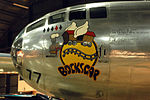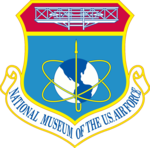Dayton Aviation Heritage National Historical Park
1992 establishments in OhioAerospace museums in OhioAir transportation on the National Register of Historic PlacesBiographical museums in OhioDayton Aviation Heritage National Historical Park ... and 13 more
History of Dayton, OhioMuseums in Dayton, OhioNational Aviation Heritage AreaNational Historical Parks of the United StatesNational Park Service areas in OhioNational Register of Historic Places in Montgomery County, OhioParks on the National Register of Historic Places in OhioProtected areas established in 1992Protected areas of Montgomery County, OhioTourist attractions in Montgomery County, OhioUse mdy dates from August 2023World Heritage Tentative ListWright brothers

Dayton Aviation Heritage National Historical Park is a United States National Historical Park in Dayton, Ohio that commemorates three important historical figures—Wilbur Wright, Orville Wright, and poet Paul Laurence Dunbar—and their work in the Miami Valley.
Excerpt from the Wikipedia article Dayton Aviation Heritage National Historical Park (License: CC BY-SA 3.0, Authors, Images).Dayton Aviation Heritage National Historical Park
Springfield Pike, Bath Township
Geographical coordinates (GPS) Address Nearby Places Show on map
Geographical coordinates (GPS)
| Latitude | Longitude |
|---|---|
| N 39.794722222222 ° | E -84.088888888889 ° |
Address
Springfield Pike
45437 Bath Township
Ohio, United States
Open on Google Maps








